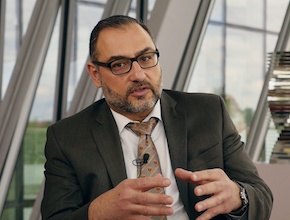What are the most common applications of point-of-care ultrasound – PoCUS – in clinical practice?
Khalid Azzam: There are a lot of them, depending on your speciality. A rheumatologist will most likely focus on doing ultrasounds of the joints, so they want to see synovitis, enough fluids, and they can just focus on that. A cardiologist will do a focused cardiac ultrasound (FoCUS), which will be four views of a full echocardiogram and they get their answers on it. An internist, like myself, will probably have a broader view. What you usually see is a patient with difficult volume assessment – like the one I talked about in the presentation [see: Should I start using point-of-care ultrasound in my clinical practice?] – and what you can do, other than look at jugular venous pressure (JVP), which is difficult, is look at the inferior vena cava (IVC) measurement, IVC variability, and you make a better decision. Frequently there is no time to send your patient for an actual full study and you need something happening at that moment.
A good application for point-of-care ultrasound that is picking up is using point-of-care ultrasound in cardiac arrests. There are some studies on this. So your patient is going through cardiopulmonary resuscitation (CPR), the “code blue” team is doing their resuscitation, and you see some electrical activity and you are wondering if there is actual cardiac activity, where to go with this case. A few seconds’ look at the heart and if you see that there is contractility, it will help you. Sometimes you have cardiac rupture, hemopericardium, and you see there is fluid you can tap. We have had patients that have been saved that way. You can direct your treatment and have an immediate intervention.
So the indications are many, depending on your specialty, and you need to know which ones you want to learn and how you are going to master them.
 English
English
 Español
Español
 українська
українська










